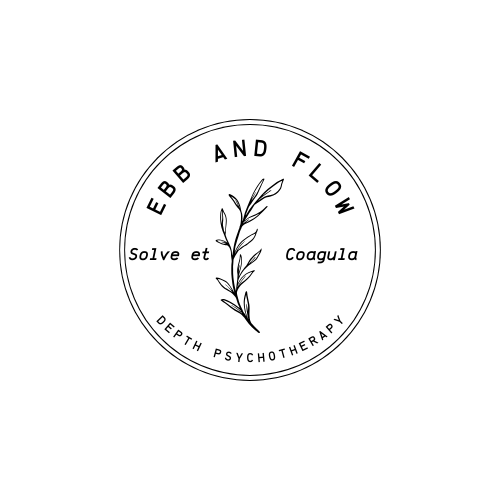How Alchemy Can Unite Us with Our Soul Purpose
Michael Ebbinghaus • March 7, 2022
How Alchemy Revealed the Mysteries of the Psyche

Jung’s masterwork on alchemy, the Mysterium Coniunctionus, is a bold and revealing study into the phenomenology and goal of this arcane art. To the mind of the medieval adept, there was little differentiation between man and materia, or psychology and mat(t)er. It therefore contaminated the chemical transformation process with a psychic one, and the subjective experience of the alchemist became as much a part of the work as the physical transformation of substances. Because they conducted their work in secret out of fear of being labeled heretics, many independent cases could be studied and a startling, some might say, impossible, number of similarities occurred in the imagery that arose and the conclusions the adepts came to (though we know these to be matters of synchronicity). The alchemists were interested in the transformation of their souls, the medium to be transformed that is also the agent of the transformation. When their souls were transformed, they could likewise bring the procedure to the collective.
The outcome of the alchemical procedure was the mysterium coniunctionus, the mysterious union of the opposites. Great antagonism reveals a desperate longing for closeness, things seemingly inimical to one other betray an unbreakable tether. There is a connection that runs through the opposites, and once transformed in the vessel of the individual, the vessel that is the transformative substance and the substance to be transformed, one can transmute into the lapis philosophorum or the philosopher’s stone.
In order for potentiality to become reality, the one (potentia) must become the many (actuality, embodiment). The multiplicity endemic to the individual renders and tears the one apart until the pieces can be differentiated, brought into consciousness, and then integrated into a whole larger than the sum of its parts, the emergent properties of holarchy as described by Wilber.
Our problems, neuroses, and political strife are born out of a failure to recognize our inherent wholeness and reconcile the opposites and duplicities within. Many will say of Man that he is egocentric, and that even the work of Jung and the exploration here undertaken are manifestations of a pathological self-fascination. However, consciousness is itself a more or less consistent projection of the Unconscious, one of the seminal theses of the Mysterium, ergo this self-fascination is not merely narcissistic inflection but characteristic of consciousness (or the Unconscious) itself. It is for this reason that Jung and others refer to the totality of the personality as the capital-S Self. Exploration of the Self, far from being an egotistical endeavor, shifts the locus of attention away from the little-s self into a broader, more complete awareness.
"Our problems, neuroses, and political strife are born out of a failure to recognize our inherent wholeness and reconcile the opposites and duplicities within."
How exactly can this knowledge serve us? To unite the duplicity within can be characterized as the union of soul with spirit, embracing one’s individual uniqueness as a perfect manifestation of Spirit. This is the critical first step in the alchemical process, the acknowledgment that one is somehow separate and that how the individual has characterized herself is arbitrary in the worst way, i.e. separated from reality. The tincture that will cure our unnecessary suffering, that will bring us into a divine and ecstatic union, is at first debilitating and brings us to the undeniable aspect of our separation, the stage corresponding to the nigredo (the blackening). The center of consciousness must move away from the ego, that which is most perceptible and corresponds to the light of the sun, to the totality of the Self, the proverbial shifting of the ego from master to servant. This is the exploration of the dark side of the personality or the shadow.
Through working with the shadow, the parts of oneself that were/are not conscious, something like a chemical transformation occurs. It permits us to see that we are separated by the powers of creation we seek to unite with (namely Spirit, the Universe, Source, God, etc.) This separation makes way for our understanding and ability to unite the soul with the body, to unite that which we conceive ourselves to be with the totality of what we actually are. This is where the corpus of our work takes place. All of this is tied in with the transcendent-immanent property of Spirit, i.e.
it is at both not fully contained within yet fully expressed at each level of reality.
Once this transformation takes place and the soul is united with spirit and the soul united with the body, the unus mundus or one world can be achieved, and one lives out the destiny of individuation through each cycle of breath, to contribute one's specific purpose to the whole Kosmos. This is what the alchemists referred to as the hieros gamos, or holy marriage between one's consciousness and the Unconscious, though Supraconscious or Transconscious also speak to Its nature.
Exploration of the little-s self allows it to give way and all that remains is the Self, all that one truly is. All that one is not, i.e. trauma responses and all unnecessary adaptation to social conditioning are melted out as impurities in the alchemical procedure. Past sins are forgiven and cast out of the prima materia and we are therefore no longer chained to the overly-protective ego which keeps us locked in repetitive cycles of behavior. Once one realizes what one really is, the process can be continued ad libidum, as the work of the lifetime never ceases.
At this stage, one is liberated from a great karmic cycle that the current epoch in Western civilization encourages, namely the fitting into and establishing coherence with cultural standards and norms. This is the basis of Bill Plotkin’s
description of our culture as patho-adolescent, as it is right and proper for adolescents to find a place and fit into their cultural framework, however the grander goal should be the attainment of timeless wisdom to improve the collective via apprenticeship and direction from true Adults and Elders, people we are unfortunately scarce in. Once cultural enmeshment has occurred, we can then turn our eyes to ancient and farther wisdom. Thankfully we have not been idle in producing pathways and tools for mastery and improvement of the condition, but the structures that employ such tools often do not promote attainment of fuller consciousness. Since such structures are culturally lacking, it is up to us as individuals to come together and build up these structures together so that the alchemical process can occur on grander and grander scales. One of the greatest gifts of consciousness is to be able to move forward and capitalize on our successes while mitigating our mistakes.
"...the grander goal should be the attainment of timeless wisdom to improve the collective via apprenticeship and direction from true Adults and Elders..."
There is a destiny that called us from beyond this life, and it was the promise of this destiny and the infinite pathways by which we might fulfill it that brought us forth from sleep forever and ever. We have and always will be fated to have our original wholeness fractured by our parents, parent cultures, and the bitterness and tragedy of Nature. Without this fracturing the whole cannot be made conscious. Through all of time, majesty, and calamity, life endures, and we enjoy the full incarnation of the Godhead through our own corporeal existence, though at times this is precluded by the very barriers created around our wounds that will lead us to it. By embracing the entirety of our form we can receive the fullness of Love and Ecstasy that awaits and allow this to be the fuel by which we strive through life. It is at once a fervent desire and something one is pained to neglect. We avoid our destiny at the wrath incurred by the Psyche.


